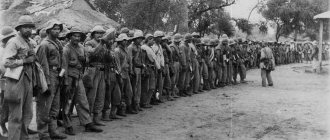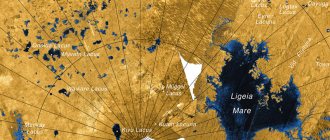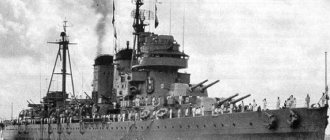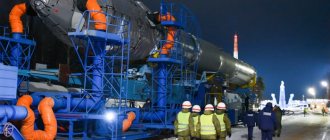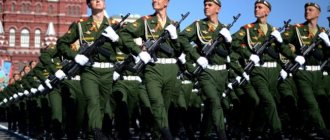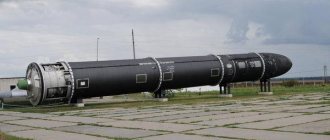The Caribbean crisis is a period of military and diplomatic confrontation between the United States and the USSR with the use of missiles. This conflict is also called the October or Cuban Missile Crisis. The event put the entire world in the face of nuclear war, but ultimately had a great impact on how to resolve controversial political situations.
Scheme of Soviet missiles targeting targets
Reasons and prerequisites for the confrontation between the USA and the USSR
The Cuban missile crisis was the result of a long confrontation between the Soviet Union and America, which lasted since 1946. Therefore, it is customary to highlight the prerequisites and causes of events that became a boiling point in relations between the two superpowers.
- The political confrontation between the socialist system, supported by the USSR, and the capitalist system, supported by the United States. Latin American countries and some African countries took the side of the Soviet Union in matters of ideology. The countries of Europe and Türkiye joined America. The Allies received weapons and financial assistance from each superpower. Therefore, the confrontation between the two systems spread throughout the world.
- Arms race between the Soviet Union and the United States. America's replenishment of nuclear weapons. By the 1960s, the United States outnumbered the USSR in the number of missile launchers by more than 10 times.
Decisive events:
- installation of US military equipment on Turkish territory in 1961;
- the deployment of Soviet missiles into Cuba a year later.
The transportation of Soviet nuclear installations to Cuba was a response to the US threat from Turkey. American weapons were pointed towards the Soviet Union and could destroy Moscow in less than 20 minutes.
Soviet missile in CIA photo. Photo by: Central Intelligence Agency
Timeline of the Cuban Missile Crisis
The action took place in Cuba in 1962. The peak of the conflict lasted only two weeks in October - from the 16th to the 28th. But tensions between Moscow and Washington began to grow since the beginning of the Cuban revolution in 1953. It influenced the possibility of deploying Soviet missiles. Liberty Island has become a lever of pressure on America.
THIS IS INTERESTING! The American President believed that some of the Soviet Union's weapons were hidden, so the world was underestimating the threat.
We invite you to watch a video about the history of relations between Cuba and the United States.
The role of the Cuban socialist revolution in the events of 1962
On July 26, 1953, the struggle against the brutal actions of ruler Fulgencio Batista began in Cuba. During his leadership from 1933 to 1940, and then from 1952, he exported millions of dollars to the United States and carried out hundreds of executions. The organization “Movement 26 July” under the command of Fidel Castro rebelled against arbitrariness. Batista's dictatorial regime fell after five and a half years, Cuba became a socialist republic. Throughout the entire struggle, democratic America supported the actions of the dictator, supplied weapons, and financed him. And when the July 26 Movement finally won on January 1, 1959, Batista fled to the United States. After the victory, the leader of the republic, Fidel Castro, began the nationalization of sugar production and oil refining factories, and branches of banking organizations owned by American citizens. This was followed by a severance of relations with America. In response to nationalization, the transportation of fuel from the United States to Cuba, as well as the purchase of sugar by the United States, ceased. Finding himself in a disadvantageous position, Castro asked for support from the USSR government. The Soviet Union began supplying fuel to Cuba and buying Cuban sugar in 1961. The Moscow government established contacts with Cuba and sent its employees to the island to restore the state after the revolution. The USSR expanded its influence on Liberty Island. Later, Khrushchev realized that this was a good territory for installing his nuclear weapons.
Soviet weapons in Cuba. Photo credit: US Navy
Deployment of missiles in Turkey and Cuba
By the early 1960s, America was winning the arms race. The US stockpile had 20 times more nuclear warheads than the Soviet Union. In 1961, American missiles left their home military bases and went to Turkey, which at that time supported the democratic policies of the United States. From Turkish territory, 15 medium-range Jupiter missiles could fly to Moscow in 20 minutes. Khrushchev considered such a step an insult, even if the American president did not plan to launch missiles. By installing weapons, Kennedy wanted to expand his influence and prove military superiority. But the Soviet government made a retaliatory move. For the first time in the history of the USSR, missiles left its territory and went to Cuba, with which they managed to establish relations.
THIS IS INTERESTING! In total, 40 thousand Soviet troops were landed on Liberty Island between August and October 1962.
On May 30, Cuban ruler Fidel Castro approved the deployment of USSR missiles on the territory of his republic. Already on July 10, during a meeting of the CPSU Central Committee, Soviet politicians discussed the amount of equipment, transport and equipment that would go to Freedom Island. The plans were to transport 40 missiles, submarines, cruisers, a group of soldiers, bombers and tank battalions. To cover the supply, the Soviet military came up with a plan called Operation Anadyr. The cargo was supposed to go under the guise of fur clothing to Chukotka from Sevastopol. Not a single sailor on the ships knew in advance that there would be a journey to Cuba. The first batch of ballistic missiles arrived on the island on August 8. All installations were delivered and placed by October 14th.
View of ships from airplanes. Photo credit: USAF
US reaction to the deployment of Soviet missiles
At the end of August, after soldiers landed and military equipment was installed on the island, American U-2 reconnaissance aircraft discovered warheads. On September 4, military pilots reported to Kennedy about the presence of Soviet missiles in Cuba. Their proximity to the United States alarmed the president and his advisers. By air, the distance between Cuba and the United States could be covered in 2 hours and 29 minutes. For the first 2 weeks, Kennedy doubted the need to respond to the deployment of Soviet missiles. He didn't want conflict. But the more weapons and movement on the island the U-2 planes detected, the more determined the Americans became. After October 15, Kennedy openly and confidently announced the movement of USSR military equipment along the Cuban coast.
During the meetings, American politicians chose between a naval blockade of Liberty Island, invasion, and inaction. On October 20, it was decided to introduce a quarantine to prevent the supply of weapons from the USSR to Cuba. The US military command began to prepare for possible active actions. Airports and divisions were put on alert. Kennedy warned the Soviet government and Americans about the blockade. On October 24, Cuba was surrounded by two hundred US Navy ships, but their captains were ordered not to open fire. Khrushchev said that Soviet supplies would continue as usual. At this time, assistance was sent to Cuba in the form of additional ships, submarines, missiles and warheads.
THIS IS INTERESTING! On October 27, a U-2 flew over the North Pole to document Soviet nuclear testing. By mistake, he deviated from the course and fell into Soviet airspace near the Long Strait for 1 hour and 22 minutes. But it was not possible to intercept him. When the pilot got his bearings and was able to fly over the territory of the Soviet Union, he had a critical amount of fuel left. But the plane managed to fly to a US civilian airport and land, setting a record for the time a U-2 spent in the air - 10 hours and 25 minutes.
Marking the location of the weapon. Photo credit: Unknow Lockheed U-2 pilot
Resolution of the confrontation between the USSR and the USA
After the official start of the blockade, Khrushchev and Kennedy entered into a “written” skirmish. They took each other's actions as an insult to their country and themselves personally. The leader of the USSR considered the presence of American ships near Cuba to be “piracy” and wrote about this in his letters to the American president. US representatives publicly accused the Soviet Union of creating a conflict situation. Amid the negotiations between October 24 and October 26, the military forces of both sides were put on alert. On October 27, the activity of American pilots increased; they made shore inspections every hour. The Soviet military noticed another U-2 reconnaissance aircraft at their bases and tried to report it to headquarters. But there was no answer from the authorities; no one answered the phone. When the scout was already close, Major General Garbuz gave the order to destroy the plane with an anti-aircraft guided missile, although it was necessary to wait for a decision from above. American pilot Rudolf Andersen died.
Khrushchev, in a letter to Kennedy dated October 26, proposed to reach a compromise and remove weapons from Turkey and Cuba. The very next day, the American president, during a meeting with the Soviet ambassador, discussed the terms for resolving the conflict. From October 29 to the end of November, American and Soviet missiles were sent back to their territories.
THIS IS INTERESTING! During September and October negotiations with Khrushchev, Fidel Castro repeatedly insisted on a nuclear strike on the United States. But the leader of the USSR believed that the Cuban had “lost his nerves” and that it was necessary to follow a peaceful path.
U-2 over a Soviet ship. Photo credit: US Air Force
Creation of the USSR nuclear presence in Cuba
After several appeals from the Cuban leader, the Soviet leadership decided to benefit from the situation for themselves. In May 1962 N.S. Khrushchev voiced among representatives of the Soviet leadership the idea of stationing nuclear missiles in Cuba.
Making an official decision
On May 28, 1962, a Soviet delegation, which included the commander of the Strategic Missile Forces, visited Havana. Negotiations took place with the Cuban leadership, and on May 30, F. Castro officially gave his consent.
The plan envisaged the deployment of two types of missiles in Cuba with a range of 2000 and 4000 km. They were intended to be removed from positions in the European part of the USSR. However, this would not weaken, but would strengthen the country’s defense capability, since from Cuba these missiles threatened the main enemy, the United States (almost throughout the entire territory).
The USSR also intended to send a limited contingent to Cuba to service the missiles. In addition, a helicopter regiment, two tank battalions, air units, motorized rifle formations and military vessels were also to be stationed there.
Operation Anadyr
It was decided to conduct the entire operation secretly, in order to avoid early US opposition. For the sake of secrecy, the name “Anadyr” was invented (too categorically different from “Cuba”), and felt boots and sheepskin coats were defiantly included in the military cargo. None of the middle managers knew the true purpose of the instructions given to him. The captains of ships delivering cargo learned the destination port from secret envelopes after going to sea.
These measures have produced results. The missiles began arriving in Cuba in September 1962, but the US leadership only learned about this on October 14 as a result of studying the films of the reconnaissance aircraft.
Results of the Caribbean crisis
A favorable outcome of the Cuban missile crisis is of great importance for the whole world. The situation made it clear: countries were on the verge of destruction, nuclear weapons were dangerous and should be banned. Important decisions were made.
- In 1963, an agreement was signed banning the use of nuclear weapons.
- In 1968, a decision was made on the non-proliferation of weapons of mass destruction.
- Creation of a Washington-Moscow hotline, with the help of which the leaders of the USA and the USSR could urgently communicate.
The whole world has realized that diplomatic resolution of conflicts is the best option for all players in the political arena. America and the USSR managed to build more loyal relations; since 1963 they have become less tense.
Part of a crashed US plane. Author of the photo: Anatoly Terentyev
Interesting Facts
The Cuban missile crisis continues to be studied and documents are declassified. Russia announced the latest new data in 2022. Some facts did not manage to be included in school textbooks on world history. Few people know about this.
- When Khrushchev was ready to return the weapons from Liberty Island to Moscow, American radars detected a missile launch on Cuban territory. But it was not possible to obtain more accurate data about the object. There is also speculation that it was a drone for studying the atmosphere.
- US Air Force General Thomas Power openly expressed concern by addressing the commanders of the US Air Force. But Kennedy did not have time to find out about this. The American government was aware of the incident 25 years after the events themselves. Interestingly, the signal was intercepted by the Soviet military, but they decided it was a joke. If they had taken the message seriously, the outcome would have been different.
- Before the situation with the deployment of missiles in Turkey and Cuba was resolved, on October 26, 1962, a missile with a nuclear warhead was put on alert in California. At this time, the US command carefully monitored the situation on Liberty Island, but did not notice what happened in their own country. They learned about the event already in November after the agreement on the Cuban Missile Crisis.
The events of 1962 are remembered in literature and theater, cinema, music and even the video game industry. A drama based on the Cuban Missile Crisis in one act was staged at the Moscow Academic Satire Theater. In a science fiction novel, Stephen King referenced the events. Feature films and documentaries about the military confrontation between the USA and the USSR were released. Since 2005, 5 video games have appeared for PCs and consoles.
J. Kennedy with Soviet ambassadors. Photo credit: Robert L. Knudsen
THIS IS INTERESTING! After the Cuban Missile Crisis, Kennedy announced that the removal of Soviet tanks, missile launchers and other equipment from Cuba was completed on November 20. But the documents of the Soviet Union indicate that the Soviet military removed all warheads before November 29.
Soviet-American negotiations and crisis resolution
All parties understood the need to resolve the conflict diplomatically in order to avoid the Third World War. On the night of October 28, J. Kennedy's brother, Secretary of Justice R. Kennedy, held talks with the Soviet ambassador to the United States and expressed his country's agreement in principle to the withdrawal of missiles from Turkey and guarantees to Cuba in exchange for the withdrawal of Soviet missiles. At the same time, J. Kennedy sent a corresponding letter to Khrushchev.
On the morning of October 28, N.S. Khrushchev discussed information from the United States with the leadership of the USSR. It was decided that such conditions suited the Soviet side. Khrushchev made a corresponding statement on the radio. The contingent in Cuba was prohibited from firing at American reconnaissance aircraft.
The terms of the agreement reached were fulfilled. The withdrawal of Soviet weapons from Cuba took 3 weeks. On November 20, the United States lifted the blockade of the island. Within a few months, American missiles were withdrawn from Turkey. There were no further attempts at open intervention in Cuba by the United States. A “red telephone” was installed between the capitals of the two countries for direct contact between leaders in particularly serious cases.



